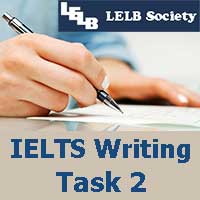Essay Writing in English
Essay Writing and Paragraph Development in English
Writing:
In order to have some technical information about essay writing, first you need to know what writing is all about.
Writing is a method of human intercommunication by means of arbitrary visual signs (letters, symbols, etc.) that form a system. Writing can be achieved in either limited or full systems. A full writing system is a system that is capable of expressing unambiguously any concept that can be formulated in language. As a result, full writing systems are characterized by a fixed correspondence between the signs of the writing system and the elements of the language that the writing system represent.
Brainstorming:
Brainstorming, free writing, or nonstop writing is an important technique in writing in which the writer thinks deeply about the topic and generates any relevant ideas about it on a piece of paper. In this technique, the organization of the ideas does not really matter.
Outlining:
The role of the outline in an essay is like the role of the skeleton in your body.
Paragraph:
Paragraph Length:
Introductory Paragraph:
The introductory paragraph of your essay is your first paragraph. It provides the reader with a broad beginning of what your entire essay is going to be about. In this paragraph, you should give your reader some general information about the central idea of your essay. If the main idea is really technical, you should make it clear to your reader. In so doing, make sure that you should start your essay from the most general and known facts to the most specific and unknown ones so that the reader would understand what you are writing about.
Focus on the significance of the central idea. In other words, motivate the reader to continue reading your essay entirely. As a matter of fact, you should provide him/her with enough rationale for following the point you are trying to make.
The most important part of your introductory paragraph is the ‘topic sentence’. In practice, it provides the main skeleton of not only your introductory paragraph but also your entire essay.
Topic Sentence:
The topic sentence in any paragraph reflects the central idea of that paragraph and the main point the writer intends to convey.
Generally, the topic sentence is located at the very beginning of the paragraph. Sometimes, the topic sentence is implicit. That is to say, it is indirectly stated.
The topic sentence should be inclusive and exclusive. In other words, it should not be too general or too specific. In fact, it must be general enough to encompass all the relevant and central ideas. On the contrary, it must be specific enough to exclude all the unrelated details.
Thesis Statement in Essay Writing
A thesis statement is the central idea that governs the essay entirely. It reflects the main purpose of the essay, and all the other information throughout the essay must be relevant to it.
Supporting Paragraph in Essay Writing
Each supporting paragraph in essay writing usually starts with a statement that reflects the main topic sentences in the introductory paragraph. You should make sure that each sentence in your supporting paragraphs ought to include all the relevant details and also exclude all the unrelated details about the topic sentence; in other words, all the sentences in your supporting paragraph must be ‘inclusive and exclusive’.
In your supporting sentences, you should also follow the exact order in which the ideas or details of the thesis statement are introduced. Otherwise, the reader may become confused.
Transition in Essay Writing
Appropriate supporting sentences are smoothly connected to each other. This technique is referred to as ‘transition’. In simple words, the end of each paragraph and the beginning of the next one should be coherently and cohesively linked to each other so that the reader could understand the connections and navigate successfully through the essay.
The following are among the most important transitional devices categorized according to their principal functions:
Examples: for example, specifically, for instance, namely, such as, to illustrate, like, e.g., i.e., say, let’s say, in particular, another, other, especially, explicitly, to be precise,
Comparison: similarly, in comparison, not only … but also, like, in the same way, comparably, analogously, relatively, alike,
Contrast: although, but, while, in contrast, yet, on the other hand, nevertheless, notwithstanding, albeit, whereas, though, in spite of the fact that, however, even though, still, nonetheless, conversely, then again, in spite of this, and yet, instead, alternatively, oppositely, contrariwise,
Results: therefore, accordingly, thus, hence, as a result, consequently, so, then, and so, for that reason, for this reason, that’s why, in consequence, as a consequence, subsequently,
Sequence / Addition: first, second, third, finally, next, then, afterwards, moreover, additionally, in addition, what’s more, also, likewise, after, previously, furthermore, and, besides, as well, above and beyond, more to the point, thus far, so far, until now,
Deduction: above all, in short, to put it in a nutshell, briefly speaking, that is, that is to say, as it is clear/self-explanatory/self-evident, by far, beyond a doubt, in so doing, in truth, on the whole, to be more accurate/exact/precise, overall, in general, in point of fact, as a matter of fact, in effect,
After the restatement of the thesis statement at the beginning of each supporting paragraph, provide as many facts, statistics, examples, details, anecdotes, etc. to support the topic sentence. You should convince the reader that the information you are providing genuinely supports the topic sentence.
Finally, finish your supporting paragraph with a conclusion that appropriately creates a transition to the following supporting paragraph.
Concluding Paragraph:
In this paragraph, you should wrap up your essay by either restating or summarizing the central idea in your topic sentence. Sometimes, you can use both of the techniques (restatement & summary) together. Make sure that you have achieved a sense of accomplishment in conveying the message of your essay through your concluding paragraph.
To stay in harmony with the topic sentence in the introductory paragraph, you may need to repeat the key words or phrases.
Notice that in the concluding paragraph, you should NOT bring up any new idea or detail with reference to the topic sentence. Instead, you should simply come to a conclusion.
In order to convince the reader of your claim in the essay, you may end your concluding paragraph with relevant quotations, maxims or provocative questions in conjunction with the topic sentence.
In order to develop an appropriate concluding paragraph, review your entire essay very closely.
Cohesion in Essay Writing
To account for cohesion, you need to consider the smooth flow of sentences and paragraphs successively.
Make sure that the new information you are providing is appropriately linked to the old one throughout the essay. This technique per se enhances the reader’s understanding of your ideas and details.
To create a more cohesive essay, you need to repeat the key words or phrases found in the topic sentence. Repetition helps your reader to achieve a better understanding of what you have written.
Another technique for creating a cohesive essay is ‘transition’. (Go to ‘transition’.)
Coherence in Essay Writing
Coherence refers to the smooth and logical connection of ideas throughout the essay. In other words, it is all about the transition between ideas. In fact, coherence plays the role of the ‘logical glue’ that helps the reader to move easily an idea to the next one. To account for clarity, the stream of information should start from the most general and understandable details and pieces of information.
The following techniques can help you to achieve coherence in writing:
- Transitional Devices: (go to ‘Transitional Devices’.)
- Repetition of Key Word: Repeating key words and phrases can help you to create a powerful cohesive effect in your writing. This technique helps the reader to achieve a more comprehensive understanding of the passage.
- Pronoun Reference: Pronouns are used to avoid the repetition of nouns or noun phrases. Bear in mind that the references of your pronouns (antecedents) should be clear in order to avoid ambiguity.
- Parallelism: Parallelism, also known as ‘parallel structure’ or ‘parallel construction’ is a grammatical balance within the sentences of your essay that have the same grammatical structure. It is believed that by applying parallelism in writing, the readability of your essay will improve. As a result, the sentences in your essay could be processed more easily and appropriately. Here are some examples to clarify the point: She likes cooking, hiking, mountain climbing and biking. He likes to swim, run, jog and read.
Argumentative Essay:
The first thing to do is to go through ‘brainstorming’ in order to analyze every aspect of the topic, gather further information and evaluate evidence in relation to the topic.
In this type of essay, you should take a clear (not neutral) position towards the topic.
It is important to note that the position that you take in the topic sentence is really significant. You must argue either for or against the topic and make it clear in your topic sentence. The same position should be maintained throughout the entire essay by supporting your claim in your supporting paragraphs.
Sometimes, you can develop some counterarguments to veto the other side of the argument.
Narrative Essay:
Descriptive Essay:
As it is clear from their names, descriptive essays are intended to describe a particular person, place, event, or thing.
To write a successful descriptive essay, you need to create a clear image of the thing you plan to describe in your reader’s mind. In so doing, you should use your five senses (seeing, hearing, tasting, smelling and touching) appropriately. You can practice the ‘brainstorming’ technique to be able to come up with some hints on the topic in conjunction with your five senses.
Then you need to take a selective approach in organizing the points and hints you have come across in relation to the topic and put them in the correct order in terms of priority and salience so that the reader could have access to the most noticeable details of the topic.
In the next stage, create an outline that delineates the number of paragraphs you need to develop ‘individually’ for the most important details of the topic and describe the details in their own paragraphs.
You should paint the picture of the topic in your reader’s mind in a very objective mode. This technique is referred to as ‘show, and not tell the topic’.
Create an appropriate ‘thesis statement’.
Expository Essay:
The essayist should conduct some research if they don’t have enough information about the topic. This type of essay is scientific, statistical or evidentiary.
Clarity and conciseness in writing are of primary importance. The essayist is not expected to posit his/her personal ideas to support something (in contrast with argumentative essays).
In an expository essay, the essayist may be required to compare and contrast two things with each other, give definitions, or explore the cause-and-effect relationships among various variables.
To write an appropriate expository essay, you should provide adequate evidential support in your body paragraph(s).
Comparing/Contrasting Essay:
Essay Showing Cause-and-Effect Relationships:

